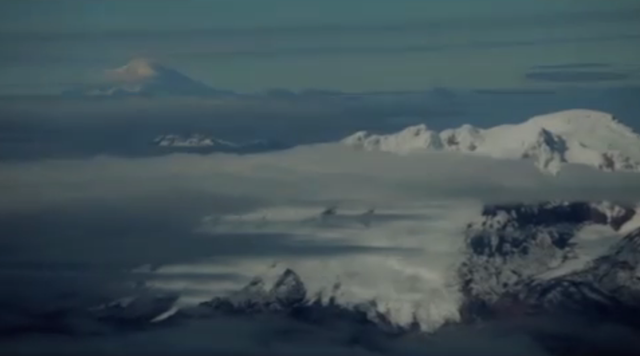Andes: Water conflicts, growing deserts, shrinking rivers, extreme temperatures, and spreading diseases
By John Vidal, www.guardian.co.uk
Friday 26 November 2010 16.52 GMT
Last month I went on an extraordinary, epic journey through the Andes mountains of Peru and Ecuador. The aim was to record the stories of the largely hidden people on the frontline of climate change, and see how communities and governments are trying to adapt. I began at 16,000ft on the snows of Mount Cayambe in Ecuador where the glaciers are in full retreat, and ended in the oilfields of the Amazon. In between, I came across water conflicts, deserts growing, rivers shrinking, extreme temperatures and diseases spreading, individuals who have seen the snows disappear in their lifetimes and are fearful for their future, and governments seriously worried that they will soon be unable to feed or provide water and power for their populations. Climate change has fallen off the political agenda in rich countries since the shambles of the Copenhagen summit last year, and the headlines have been dominated by global recession. But while politicians fail to act, the phenomenon continues unabated. In the past week, the three major institutes that calculate global warming have said 2010 will at least tie for the hottest year yet recorded, and it is widely expected that global carbon dioxide emissions will hit record levels. This year summer temperatures in Russia and central Asia were 7.8°C above average for a whole month, the Pakistan floods affected more than 20 million people, and temperature records were set in 17 countries from Finland to Iraq, Burma and Colombia. Again, there was a near-record melting of Arctic sea ice and the UN has recorded more than 700 extreme-weather related disasters. Yet most of the world has never heard the phrase “climate change” and does not understand the science behind man-induced climate change. Hundreds of millions of people are having to adapt without help to the major changes in the climate which they can see are taking place, for which they are not responsible. Next week 193 governments meet in Cancún, Mexico, to thrash out a new climate deal. There is no prospect of a legally binding agreement for several years. Instead, there is a massive gap between the pledges made so far by the rich and the actions that science says are needed to avoid the worst of climate change. Latin America, home to 500 million people, will lead the world in demanding more ambition and urgency. This is my account of what I saw there. 4,698m (15,420ft) Mount Cayambe, Ecuador: We are dead on the equator but the wind whips snow from the glaciers and icefields on Ecuador’s third highest mountain. The 5,897m (19,350ft) peak is shrouded in cloud but the ice, which used to stretch many kilometres down the mountain, has retreated 600m (2,000ft) up the mountain in 30 years. “Ecuador has nearly lost one third of its ice,” says the glaciologist Bolivar Caceres, the head of the government’s glacier and meteorology unit. “The speed has been incredible. It started in the 1980s and is still accelerating. The glaciers have all retreated miles. Cayambe has lost 40% of its ice mass, possibly 10% in just the last decade.” His predictions, however, are based on a 1°C rise in temperatures in the next 80 years, which other glaciologists say could be too conservative. 4,100m (13,450ft) Pampa Corral, near Cusco, Peru: The farmer Julio Hanneco grows 215 varieties of potatoes in his highland village. “I live close to two glaciers. They used to give us light in the night and water. I would only have to walk a few metres and I could touch one. Now they have gone. It takes a whole day to get close to one. There have been so many changes in the climate and I don’t understand what is happening. The seasons used to be certain and we would know when to plant crops. I feel disoriented. I fear soon we will have no water. If that happens it would be the end of the world for us.” 4,058m (13,313ft) La Paz, Bolivia: New peer-reviewed, US-government funded research suggests that Bolivia and Peru face catastrophic food and water shortages if temperatures rise as predicted. Researchers at the Florida Institute of Technology, funded by the National Science Foundation (NSF), found that Lake Titicaca had twice shrunk 85% following temperature rises only 2-3°C higher than now. “The implications would be profound for over two million people,” says NSF’s Paul Filmer. In a separate analysis, the cost of climate change to Bolivia, South America’s poorest country, could be over 7% of its GDP by 2025 – almost as much as the country’s combined spending on health and education. …
A climate journey: From the peaks of the Andes to the Amazon’s oilfields via Wit’s End
